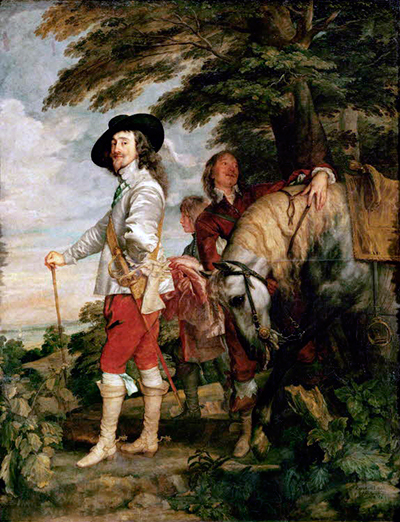Anthony van Dyck was a highly significant artist whose life and career is outlined in full in this extensive biography
Van Dyck was born in the final months of the 16th century in the European town of Antwerp. This whole region would contribute some of the most famous names in all art history over a period of several centuries and from around this time only Peter Paul Rubens would have a greater impact on the development of Norther European art.
Having passed away in London in 1641, Van Dyck fitted a surprisingly large amount into his 42 years. He would develop skills as a capable draughtsman, painter and etcher. These were the three most common mediums during that time. Some of his drawings would also be used for others to produce etchings or paintings from themselves.
Life expectancy in the 17th century was far shorter than that of today and so large families were far more common. Anthony himself was the seventh of twelve, though his father was a wealthy merchant, ensuring they would never be short financially. He would use his own connections to give opportunities to his young son who was immediately displaying huge promise artistically.
As early as 10, Anthony would commence his tutorship with Hendrik van Balen who was a successful local painter. He would then be welcomed into the studio of Peter Paul Rubens, an artist spearheading the Antwerp art scene. Most young artists will tend to match their master's style for many years before they become sufficiently skilled and confident to forge more their own path and Van Dyck is another example of that.
His early work was, therefore, broadly Rubens-esque, though will a slightly altered palette, with darker tones. He also lacked the great man's subtlety at this point but that is to be expected for anyone learning their trade. It would be Rubens' own suggestion that his student would start to add items into the background of his portraits, having initially left very plain scenes behind his subjects.
It was not long before Van Dyck and Rubens would be seen as rivals rather than pupil and tutor. Their relationship would weaken over later years but they remained highly respectful of each other on both a personal and professional basis. Indeed, some of Rubens' connections in England may have been put to use to aid Anthony on his first visit to the country in late 1620.
The Antwerp guild would welcome Van Dyck into their prestigious institution in early 1618 and at this point the artist was clearly content with the influences available directly on his doorstep. Just a matter of a few years after this and many considered his work, on some occasions, to be the match of his tutor Peter Paul. On some future projects they would now consider each other as collaborators on a much more equal footing.
Van Dyck did not settle in the court of King James I and so returned to Antwerp before making his way onwards to Italy. Rubens had visited over a decade earlier and his connections would prove beneficial. There were artistic influences right across the papal states at this time, meaning Van Dyck would use Genoa as a base from which to also visit the likes of Rome, Venice, Padua, Palermo, Mantua, Milan and Turin.




